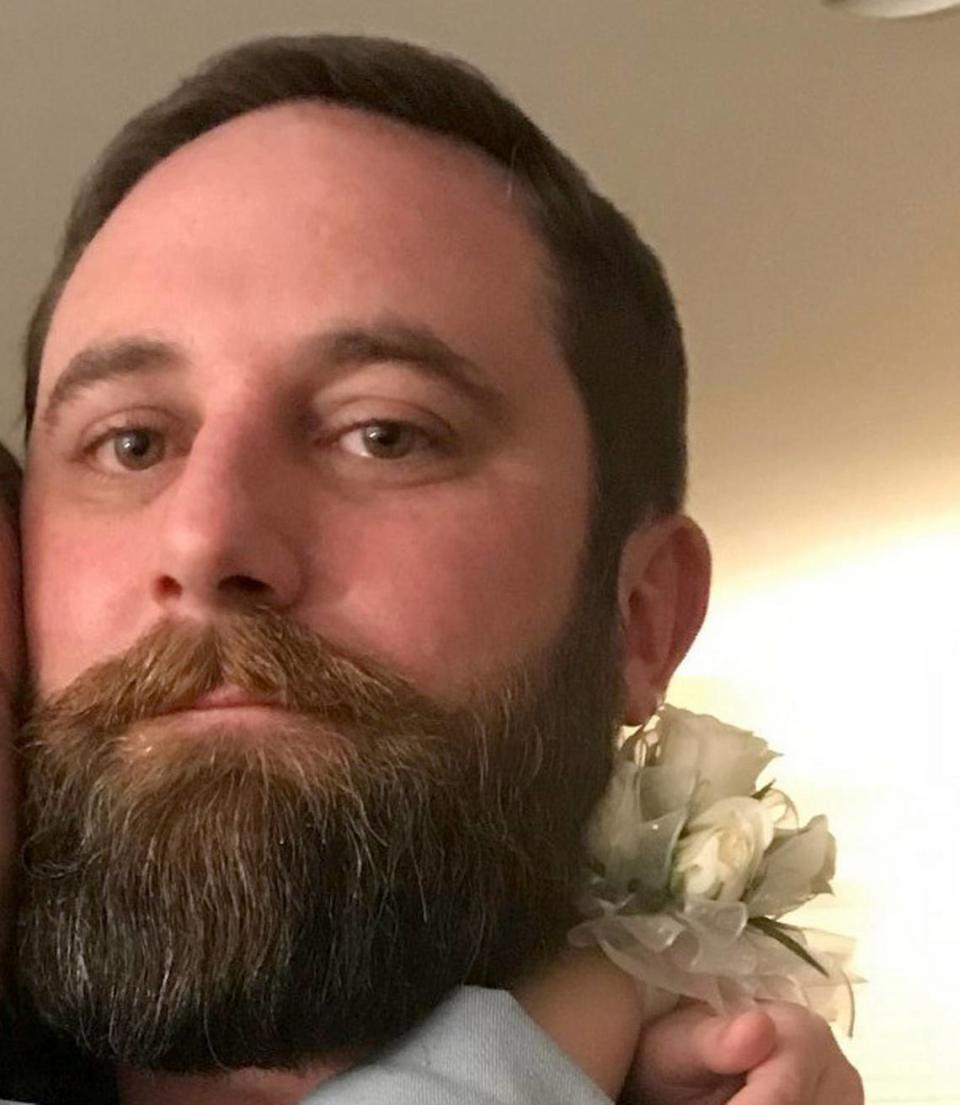NC man was complying with orders when police shot him outside his home, lawsuit says
A new federal lawsuit alleges that when a Mooresville police officer ordered Chris Craven to raise his arms and get on the ground, the father of three had only four seconds to live.
That’s all the time that ticked off before officers Christopher Novelli and Alex Arndt unleashed a barrage of gunfire from their high-powered rifles, striking the 38-year-old Craven about 20 times from close range, according to the complaint filed this month by his widow, Amy.

The officers’ action were not only excessive, the lawsuit alleges. They were illegal, too.
Amy Craven’s lawsuit names Novelli, Arndt and the Town of Mooresville as defendants. It accuses them of excessive force, violation of constitutional protections against illegal search and seizure, negligence and gross negligence, assault and battery, wrongful death, among other claims.
Her attorney, Alex Heroy of Charlotte, was not available for comment on Monday.
Patrick Flanagan, who is representing the town and the police officers, said in an email to the Observer that he had no comment.
Officers who fatally shot NC man at home won’t face charges, special prosecutor says
Craven, a Mooresville native who worked in the parts department of the Rick Hendrick NASCAR racing team, died two doors down from where he grew up.
At its core, the lawsuit over Craven’s death lodges an allegation at the center of the country’s widening debate over police tactics — that Novelli and Arndt used deadly force on the night of Aug. 2, 2020 when Craven did not pose a imminent or deadly threat.
Whether the debate is heard by a jury remains to be seen.
Over the past six weeks, two civil complaints stemming from highly controversial Charlotte-Mecklenburg police shootings have been thrown out by federal judges before they went to trial.
In both cases, the judges ruled that officers were legally justified in the killings of Danquirs Franklin and Ruben Galindo. Both rulings, which have been appealed, cited existing law that grants broad protections for officers making split-second, life-and-death decisions in rapidly changing circumstances.
According to a 1989 ruling in a Charlotte case, police can use deadly force if they have a “objectively reasonable” fear of death or serious injury to themselves, fellow officers or the public at large.
In the Franklin case, Senior U.S. District Judge Graham Mullen’s ruling said the officer who shot Franklin overestimated the threat he posed outside a Burger King on Beatties Ford Road in 2019. But given the circumstances, her mistake had been a “reasonable” one, the judge said.
Judge throws out lawsuit against Charlotte, officer in 2019 Danquirs Franklin shooting
In June, a special prosecutor used similar wording in announcing he would not bring criminal charges against Novelli and Arndt, saying a State Bureau of Investigation report had shown that the officers “reasonably” feared for their lives before opening fire on Craven during the standoff outside his home.
“It is clear from all of the evidence that at the time Officers Arndt and Novelli fired their duty rifles they were presented with an imminent threat of death or serious bodily injury from the actions of Mr. Craven,” Randolph County District Attorney Andy Gregson said in summarizing the findings of the SBI report.
“It is also clear from the evidence that the officer’s application of deadly force was reasonable and necessary in response to this threat.”
After ordering Craven to get on the ground, both officers stated that they saw him “reach into his waistband with his right hand and pull out a pistol,” Gregson said.
The lawsuit offers a radically different account.
It claims Craven was experiencing a mental health crisis when his eldest daughter called 911 that night, reporting that her father was carrying a gun and threatening to kill himself.
At least six Mooresville police officers surrounded the home. They found Craven seated on his front steps. According to the lawsuit, when police started shouting at him, Craven rose to his feet and began walking toward a camper parked in his driveway.
When the officers ordered Craven to put his hands in the air, he complied, according to the lawsuit. When they ordered him to get on the ground, he began to lower his hands.
Novelli was the first to shoot. Arndt joined in. Several of the rifle shots went through the walls of the home, where Craven’s wife and children had taken cover, striking a fire extinguisher and causing it to explode.
Four seconds went by from the first police order to the first rifle shots, the lawsuit claims.
“During those four seconds, Chris did not threaten any of the officers, did not approach or get close to any officer, make no attempt to flee or resist arrest, or make any hostile gesture or statement to the officers,” the lawsuit alleges.
“A firearm was located several feet behind Chris’ body after he was killed. At no point did Chris pull out a weapon or gun (and point it) at any officer, much less point it at anyone, endanger or fire any shot at officers.”
He had not committed “any criminal act which would threaten the safety or welfare of anyone that would justify” the officer’s use of deadly force, the complaint states.
That makes the decision by Novelli and Arndt to open fire “objectively unreasonable,” according to the lawsuit, leaving them and the town liable for damages in Craven’s death.

 Yahoo Movies
Yahoo Movies 